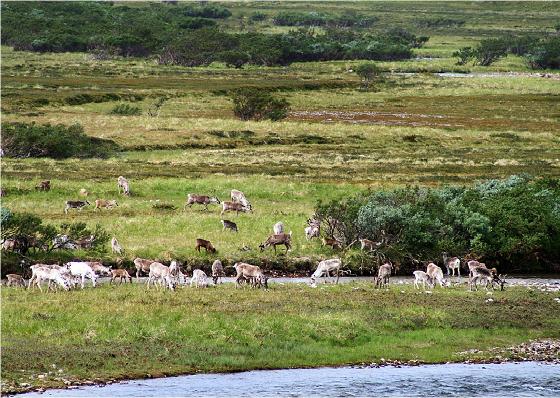COAT (Climate ecological Observatory for Arctic Tundra)
COAT is a long-term, ecosystem-based and adaptive observation system. It aims to unravel how climate change impacts arctic tundra food webs, and to enable prudent science-based management. COAT employs an adaptive approach, where improved knowledge, needs of stakeholders, as well as new technology and methods feed back to the research.
Food webs are complex entities and simplifications are needed to accommodate the overall protocol of COAT. First, outlines of food webs for two targeted regions of the Norwegian Arctic – low-arctic Varanger and high-arctic Svalbard - lump many of the species into functional groups and focus only key trophic links.
Second, the two food webs are further divided in food web modules – 4 for Svalbard and 6 for Varanger. Each of the food web modules includes a subsets of strongly linked species (or functional groups/species assemblages) that have high climate sensitivity and key functions. Key functions can be either ecological and/or societal.
The COAT Science plan outlines a conceptual model for each food web module. These models guide the monitoring design that may include management actions. They also guide the structure of statistical models that estimate impacts and derive predictions based on the monitoring data.
COAT is a core activity of the research group, where several of the group’s members are involved. It also involves a large number of researchers from other institutions of the FRAM centre (NINA, NPI, UNIS, MET) where it is a major initiative in the Terrestrial flagship program.
COAT works on integrating research with education at levels ranging from primary school to PhD courses. Through the university courses at UiT and UNIS, bachelor and master students are offered research-based education and training. Contact the COAT module leaders or COAT coordinator Eeva Soininen.

Photo: Leif Einar Støvern